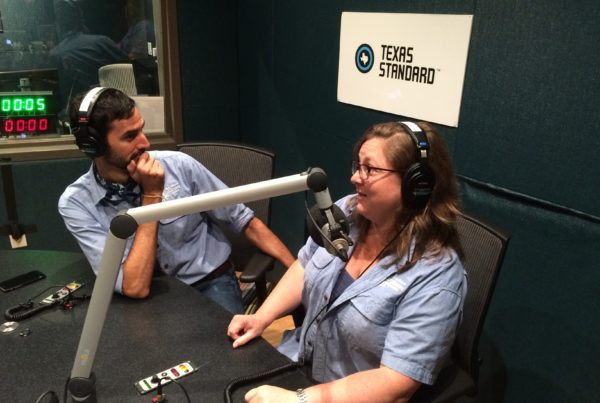Audio will be available shortly.
From Texas Public Radio:
In a lab at the University of Texas Health Science Center at San Antonio, dental researcher Cara Gonzales, DDS, Ph.D., shared promising news on a new approach to healing.
“It was very exciting,” Gonzales said. “These patients have not had any new therapeutic options in 40 years.”
The discovery of a new gene that’s turned on in oral cancers gave Gonzales and her colleagues a new target at which to aim. It’s a gene that’s also found in lung cancers.
Gonzales works in a sprawling space filled with lab equipment and cell lines used in many molecular biology projects. One of her research assistants brought in a cage of lab animals with some strange lumps on their backs.
“These are called nude mice because they don’t have a complete immune system,” Gonzales explained.
These mice are at the center of a successful experiment. First, scientists used human oral cancer cells to grow large tumors on the animals. They tried one oral cancer drug already on the market. Not much action. Then, they tried a lung cancer drug, also already approved by the Food and Drug Administration. Not that effective on its own. Finally, they used a combination of two drugs. What happened made the medical profession take notice.
“When we combined the two, then we saw a 50 percent reduction in the tumor volumes after 14 days,” Gonzales described.
That kind of success could help thousands of patients whose cancers aren’t caught until the later stage, patients like Paige Lewis of San Antonio who was only 35 when she got the results of a biopsy from her doctor.

















